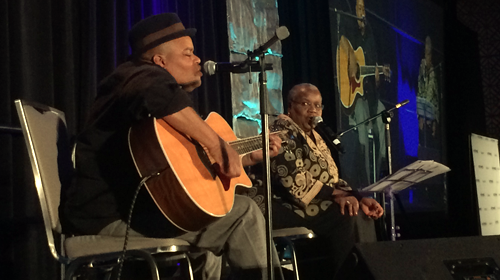
“Everyone is aware of race. Dealing with racism is another matter,” said a keynote speaker at Facing Race 2014: A Multi-Racial, Intergenerational Gathering for Racial Justice Advocates. I joined almost 1,600 people from across the United States and several countries in Dallas last weekend for the conference, which marked the 50th anniversary of the passage of the Civil Rights Act of 1964.
The sheer power of the gathering lay in the diversity of its participants, who ranged from veterans of the Civil Rights Movement of the 1960s to DREAMers in high school and young people from Ferguson, as well as people of every race, gender, sexual orientation, and ethnicity working in some way to promote racial justice.
Facing Race 2014 addressed both successes – such as the emergence of a strong, multi-racial coalition to challenge biased policing in New York and the recent win in Minnesota to ban the criminal history box on employment applications – as well as challenges – including the enduring myth that America has entered a “post-racial” era and ongoing obstacles to comprehensive immigration reform.
Advocates debated strategy on issues as wide-ranging as mass incarceration, immigration reform, racial profiling, voting rights, economic development, housing, and labor rights. A running theme throughout was how addressing the role of race within organizations and coalitions had led to effective collaboration between different racial communities and across issues, effectively countering efforts to divide progressive movements along the lines of race, citizenship, or sexual orientation. Advocates from Mississippi, Texas, and North Carolina explained how even in the face of daunting political challenges, they have secured advances for poor people, undocumented construction workers, and low-income LGBTQ communities of color.
Facing Race 2014 powerfully underscored that advocates working on seemingly distinct issues are in fact part of a broader movement to transform our country to be more just and equitable, one with roots in the struggle to uproot slavery and legalized racial segregation and a vision of equality that embraces the ever-increasing diversity of our society.
This point was brought home when Dr. Bernice Johnson Reagon, a member of the Student Non-Violent Coordinating Committee Freedom Singers and founder and leader of Sweet Honey in the Rock, took the stage with her daughter, Toshi Reagon, a composer, producer and ensemble leader. Together, they led attendees in song:
We who believe in
freedom cannot rest.
We who believe in
freedom cannot rest until it comes.
Until the killing of Black men,
Black mothers’ sons,
Is an important as the killing of White men,
White mothers’ sons.
. . .
Struggling myself don’t mean a whole lot.
I come to realize,
That teaching others to stand up and fight
Is the only way my struggle survive.
Written in 1988, these lyrics continue to resonate. Sung by racial justice advocates today, as our country awaits a grand jury’s decision whether to indict the police officer who shot and killed Michael Brown, these lyrics are profound. They remind us that, in the past, communities of color and racial justice advocates of all stripes showed tremendous strength in the face of seemingly insurmountable barriers to equality.
This is a lesson we must keep close to us today. So too are the lessons on resisting divide-and-conquer tactics, strengthening multi-racial coalitions, working across issues, and continuing to fight – and win – battles for racial justice, despite setbacks and no matter what the odds.
Van Jones, CNN host and president of Rebuild the Dream, said at the conference’s close: “There are many futures out there. You get the one you fight for.” Facing Race 2014 showed that so many people and communities are deeply engaged in the fight for a future where all people live with hope, dignity, and opportunity.
We are a force to be reckoned with. And that gives me hope.
Learn more about racial justice and other civil liberty issues: Sign up for breaking news alerts, follow us on Twitter, and like us on Facebook.
Stay informed
Sign up to be the first to hear about how to take action.
By completing this form, I agree to receive occasional emails per the terms of the ACLU's privacy statement.
By completing this form, I agree to receive occasional emails per the terms of the ACLU's privacy statement.

